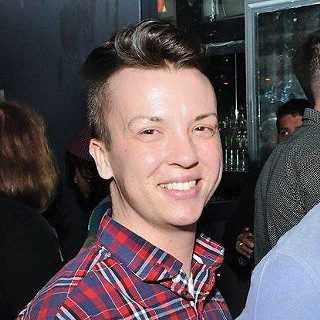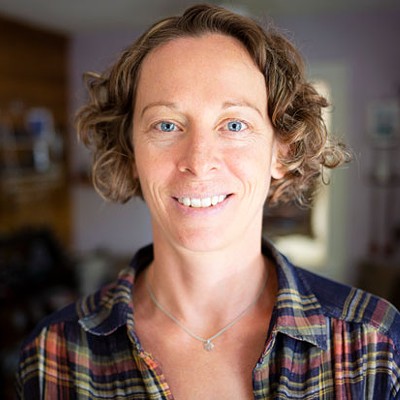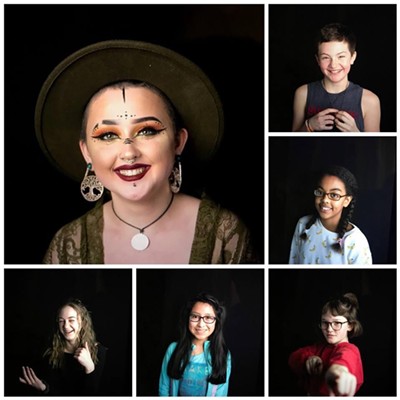[
{
"name": "Air - Ad - Rectangle - 2 pack - Inline Content - 1",
"insertPoint": "1/2",
"component": "16844684",
"requiredCountToDisplay": "6"
}
,{
"name": "Air - Ad - Rectangle - 2 pack - Inline Content - 2",
"insertPoint": "1/4",
"component": "16844686",
"requiredCountToDisplay": "20"
},{
"name": "Air - Ad - Rectangle - 2 pack - Inline Content - 3",
"insertPoint": "3/4",
"component": "16844687",
"requiredCountToDisplay": "17"
}
]
Last week, I wrote about the growing awareness of the sexual exploitation of youth in Central Oregon It's a controversial topic that many people would rather not talk about. I wanted to get some additional perspective from Portland-based anti-violence activist Emi Koyama, who writes and speaks about the addressing the roots causes of exploitation and violence. Koyama has been vocal in her critique of some mainstream anti-trafficking organizations as well as the FBI's stings and "rescues." She shares her perspective on the issue below.
Source Weekly: What is your background/experience as it pertains to the subject of child sex trafficking?
Emi Koyama: I was once a runaway teen and a sex worker (as an adult). I have been working in the movement against domestic and sexual violence for almost 20 years, and frequently write/present about sexual violence, sex trade, and sex trafficking.
Also, please don't refer to the youth as "children." There are certainly "children" who are trafficked, but they are clearly outliers; most are 16- and 17- year olds who resent being referred to as "children."
SW: You’ve critiqued the “rescue” approach. Whether these so-called rescues involve cash transactions or law enforcement, why are they problematic and what are the alternatives?
EK: I support direct cash transfer. Unfortunately that doesn't happen very often... The law enforcement approach is problematic because the law enforcement is a major source of violence to people and communities that are vulnerable to abuse and exploitation, including street youth and immigrants.
"Rescue" approach presumes that young people have a safe home to go back to and the only problem is the presence of the "trafficker." That is not the reality for the vast majority of young people who are in the sex trade. Youth often engage in sex trade in order to escape from violence and abuse at home or in the child welfare system (foster families, group homes, etc.). "Rescue" only sends them back to the unsafe situation that they are escaping from in the first place.
Alternatives are voluntary, non-judgmental services as well as grass-roots organizing. We need housing, jobs, comprehensive healthcare including substance use and mental health care, and other resources that would enable young people to live free from violence.
It may be convenient for the society to pretend that the violence only comes from pimps and sex buyers, but it is not true. According to Young Women's Empowerment Project, police, hospitals, and schools are much larger source of violence than pimps in the life of street youth, especially youth of color and queer and trans youth.
SW: Do you believe there should be a difference in how advocacy groups, law enforcement, etc. respond to youth engaged in survival sex and youth who are being trafficked/coerced/pimped out?
EK: There is a role for the law enforcement in addressing abuse and exploitation of the vulnerable. The reality however is that the law enforcement is often the source of violence and abuse, not only for the youth who are in the sex trade, but also for people who are profiled as suspected pimps—i.e. Black and Brown men of color (in a recent community forum on sex trafficking that I attended, for example, Des Moines, Washington police chief claimed that rap music was partially responsible for sex trafficking—which is not just a racist slip, but reflective of his force's routinized profiling of Black and Brown youth as gang members and pimps). Advocacy groups that work with the law enforcement need to keep a critical distance from them in order to center youth, whether they are trafficking victims or not.
SW: Most people involved in this work have preferences around language (i.e. child victims vs. underage prostitutes, purchasers vs. johns, etc.). What are yours?
EK: I talk about youth in the sex trade, because it is a neutral descriptive phrase. "Victims" and "prostitutes" are both about what people are, while "youth in the sex trade" describes the circumstances they are in. I think it's important to call youth "youth" rather than "children." King County's public health department uses the phrase CSEY (commercial sexual exploitation of youth) as opposed to CSEC (which Multnomah County still uses), and I think it's an improvement.
As for johns/buyers, I really don't care much one way or another.
SW: What do you think efforts to prevent child sex trafficking should be focused on?
EK: Addressing the root causes of poverty, racism, abuse (including homophobia and transphobia at home that lead to youth homelessness), and state violence (imprisonment and deportation of parents). We also need to overhaul our broken child welfare system that often fails to provide safety net for young people who do not have safe and supportive home.
SW: You’ve called into question some of the more sensational statistics re: this topic, such as the average age of recruitment. Why are potentially-inflated statistics problematic?
EK: Bad numbers lead to bad policies. For example, if we were to accept that most youth entering the sex trade are in elementary school (which they definitely are not), we might think that the solution is to have more police surveillance at our schools and public places. But the reality is that most youth are much older, and are harmed by the increased surveillance of public spaces; it can, for example, make it necessary for runaway or thrownaway youth to find an adult to stay with in order to avoid being harassed by the police, and that might put them at more risks than if they had remained in public spaces.
SW: Who’s on the right track? Are there any individuals or organizations that are addressing this issue in a way that is respectful/aware/effective?
EK: Grass-roots organizing groups like Young Women's Empowerment Project of Chicago and Different Avenues of Washington, D.C., have been forced to fold under the constant threat from the anti-trafficking movement. Power Inside from Baltimore, Women with a Vision from New Orleans, and Native Youth Sexual Health Network are some of the remaining organizations run by and for young women of color that support youth fight against violence including the state violence. And Streetwise and Safe, which organizes youth of color in New York.
As for anti-trafficking organizations, Prax(us) from Denver has a youth organizing project Hartcore which is doing wonderful stuff. Safe Horizon in New York has a street youth services called StreetWork which is one of the three original recipients of federal anti-domestic sex trafficking funds (and only one out of the three that provides harm reduction based voluntary services).
SW: What else would you like to add?
EK: See this blog post and this blog post.

























